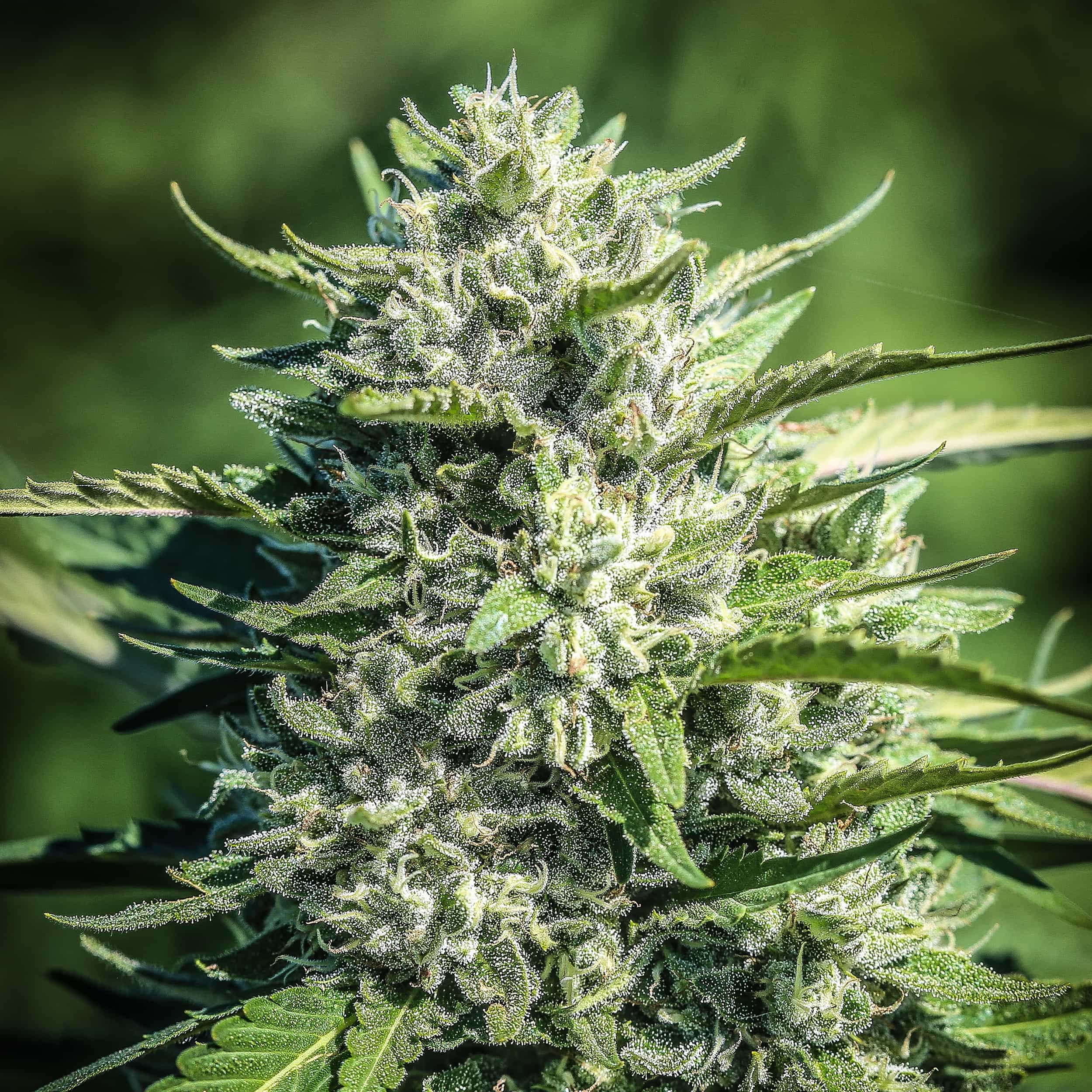The industries first CBG dominant feminized cannabis seeds. White CBG, Stem Cell CBG, Sour G CBG, and Auto CBG Seeds. Extremely low THC varieties that will always remain below 0.3%, and commonly below 0.2% total THC.
CBG Seeds

All seeds listed, including Autoflower Seeds, CBD Seeds, CBG Seeds, CBDV Seeds, THC Seeds, THCV Seeds, and Triploid Seeds are feminized.
"Seedless" varieties are triploid cannabis genetics. Learn more about triploids here -->
To ensure germination success we recommend visiting our seed start guide below.
Breeding at GTR Seeds
We pride ourselves in breeding true to type F1 hybrid seed stock. This includes all of our CBD seeds, CBG seeds, CBDV seeds, THCV seeds, Autoflower Seeds, Triploid seeds, and the vast majority of our line-up THC seeds.
View the heritage of each of our feminized THC genetics--->
Why do we produce F1 hybrids?
An great example of an F1 hybrid is the mule. Superstars of endurance, efficiency, intelligence, and vigor. They outperform both of their parents in critical, predictable ways in real world applications. Mules are used in genetics classes to drive home the lesson of heterosis: when two very distantly related individuals are paired, the resulting progeny tend to exhibit vigorous, positive qualities not seen in either parent.
We take advantage of this feature by simultaneously homogenizing distinct varieties independently of each other for many generations via self-pollination (to the brink of infertility), then outcrossing and testing for the most vigorous progeny. F1's are also produce the most consistent and homogenous plants available in seed form.
To produce a single F1 line that exhibits superior heterosis requires the independent development of two separate varieties for many generations, followed by test outcrosses and field trials to identify which combination of parents results in the best offspring. This process takes years but it leads to plants with minimal variation.
We as breeders never simply pick two plants we like and cross them. There will always be a place in the industry for pollen chucking polyhybrid producers. But that is not who we are.
Get a 10 pack, or a 1000 and you can expect consistent, reliably feminized seeds with minimal variability between plants.
Why only Feminized Seeds?
Generally speaking, at least 50% of all regular seeds are males. There is nothing more annoying then taking care of a room or greenhouse full of plants and having to throw away half of them months later after they show their sex. Or even worst, discovering the biggest plant in your garden is a male half way through the season.
It is not economically viable for anyone growing at scale to sex their plants, and in our opinion not necessary considering the ease of feminized seed.
In the early days of feminized cannabis seeds, breeders would release seeds that were produced from a female plant that produced male flowers (hermaphroditic) and pollinated a room or field. While this method does produce mostly female offspring, the offspring are unstable and prone to produce hermaphrodite flowers.
In our breeding program, we only select stable genetics to make our crosses with, and rigorously test plants to ensure stability prior to making our feminized seeds. Female parents from one inbred line are treated with STS, which allows us to reverse the plants to become a pollinators for a separate inbred line. Both lines are females, and with no added risk of passing on hermaphroditic traits. We harvest seeds exclusively from the mother plants while any seeds from the pollinators are never released.
We use this method with all of our genetics, from our CBD and CBG Seeds to our type I THC and THCV seeds.
The resulting offspring are 100% feminized cannabis seeds, meaning every single plant will have female chromosomes. That said we generally see about 1 phenotypically male plant per 4000 in our lines which equates to 99.97% feminization.
Like all cannabis genetics, be it from seed or clone, may produce hermaphroditic flowers when exposed to stressful growing conditions. We occasionally see higher numbers in our triploid seed varieties, but the pollen is for the most part sterile. We always recommend pulling plants that manifest as full blown males.








